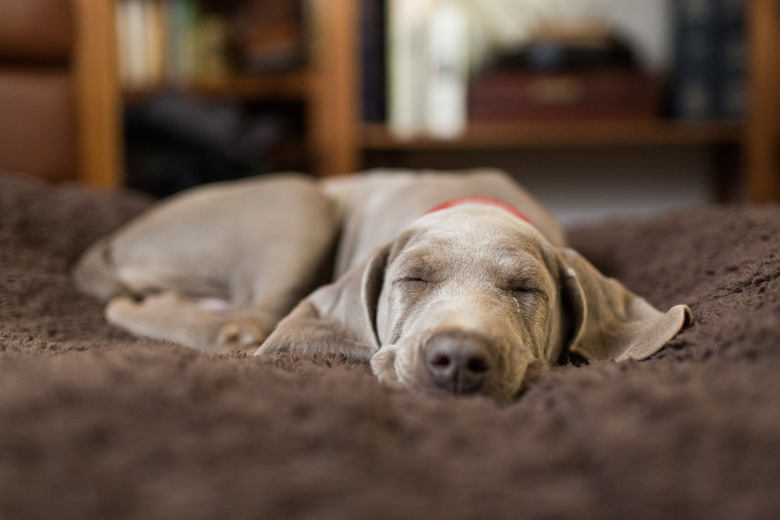How To Heal A Male Dog After Neutering
Testicles serve a specific purpose, and many dogs are better off without them. When it comes to canines, it makes more sense to neuter your dog than to leave him intact, unless you plan to breed him. Why subject your pet to a life of sexual frustration? Also, a dog's desire to roam is significantly reduced by neutering, since he no longer seeks female companionship, and he will pay more attention to you during training and other endeavors since his mind is not distracted.
Neutering also brings health benefits. Neutered male dogs are unlikely to develop prostate or testicular cancer, and as the Canine Journal points out, they are also less likely to develop diabetes or perineal fistulas. The latter involves particularly nasty recurring boils in the anal region, and in some dogs the condition is incurable.
The neutering process
The neutering process
It helps to understand just what your dog experienced. As per the Massachusetts SPCA, the canine neutering process consists of the vet making an incision in the skin near the scrotum at the base of the penis. The vet removes both testicles via this incision. The incision is then closed with stitches underneath the skin that eventually dissolve, and the skin itself is closed with more stitches, glue, or staples.
Of course, the dog is given general anesthesia for the procedure. For many dogs, anesthesia recovery is the most difficult part of the operation. Even though many dogs, especially young ones, seem back to normal once the anesthesia wears off and they are home, you should watch your dog carefully for the next week or so.
Possible complications
Possible complications
Most male dogs recover from neutering without issue, but there is a risk of complications with any surgery. Ohio's Steel Valley Spay Neuter Clinic reports that their major post-surgery complication is owner compliance. Your veterinarian will give you instructions on how to care for your dog after neutering, and it is essential that you read and follow them. Minor swelling, redness, and bruising are normal, but call the vet if any of these post-surgical side effects become major, or if there is a discharge.
The healing process
The healing process
Keep your dog quiet and confined for at least 24 hours after surgery. Keep him in a dry, warm area, but don't let him have the run of the house, if possible. You want to limit his activity to the best of your ability for the next 10-to-14 days. Take him outside briefly only so he can relieve himself.
Check his incision daily. Avoid bathing your dog or allowing him to get wet. If the incision becomes wet, an infection may follow.
Your dog may have to wear an Elizabethan collar — the notorious "cone of shame" — so that he won't lick the incision while recuperating. Yes, he will hate it, and implore you to remove it, but remember it is for his own good. You can take it off when you go for walks since you are watching him carefully.
Your vet may give you pain medication to ease your dog's discomfort. Most male dogs won't need pain medication after the first day or two, but there are some that continue exhibiting soreness. Your dog may not want food the day he comes back from the veterinary hospital but should start eating by the following day. Call your vet if your dog refuses to eat or experiences vomiting or diarrhea.
The road to recovery
The road to recovery
Once your dog seems like his normal self and wants to play, he's well on the road to recovery. Just don't let him do too much, too soon. Young, healthy dogs usually seem fine in less than two weeks after neutering, but it's still important to limit his exercise and activities until those two weeks have passed. If you've ever had surgery and overdid things before the doctor gave the OK, you'll understand why these precautions are taken.
Always check with your veterinarian before changing your pet's diet, medication, or physical activity routines. This information is not a substitute for a vet's opinion.
